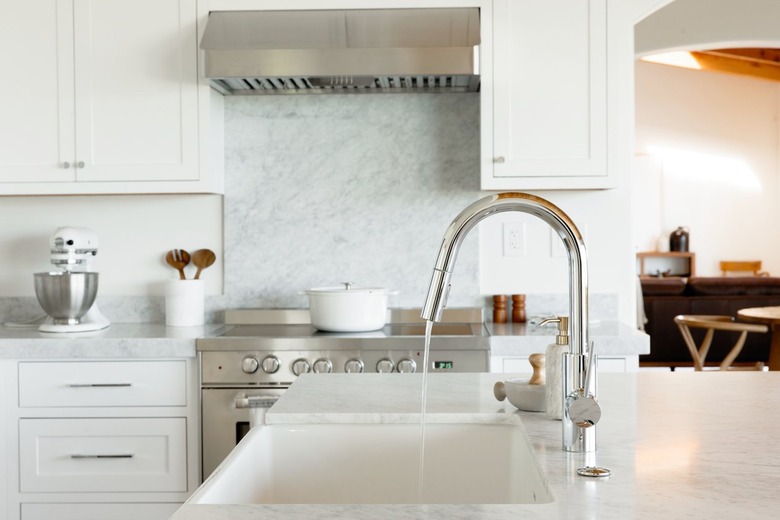How To Troubleshoot A Residential Water Pressure Regulator
We may receive a commission on purchases made from links.
Any home on a municipal water system has to have a water pressure regulator, sometimes called a water regulator, to reduce the water pressure to a value safe for the building's plumbing. Municipal pressure often exceeds 90 psi, but that kind of pressure would create banging from water hammer, cause pipe connections to leak, and damage water-using appliances. The water regulator reduces the pressure to somewhere between 40 and 60 psi to avoid these problems.
A water regulator is a mechanical device that can fail, and a common cause of failure is blockage by mineral deposits, which results in low water pressure in the building. It's also possible for the internal components of the device to degrade and stop working, which usually raises the water pressure. The easiest way to resolve issues with a malfunctioning water regulator is to replace it.
How a Water Regulator Works
How a Water Regulator Works
Of the two available types of water pressure regulators, the most common is the diaphragm type. Water passes through the inlet to a chamber containing a rubber diaphragm connected to a spring that operates a valve controlling flow to the outlet. The pressure of the incoming water pushes down on the diaphragm, which in turn closes the outlet valve. The higher the incident pressure, the more the valve closes to restrict outflow and maintain constant output pressure.
The user can adjust output pressure by manually opening or closing the valve using the exposed hex nut on top of the device. That's good to know because if you're experiencing low water pressure in the house, you can often correct it by tightening this nut (turning it clockwise). Similarly, if you are experiencing symptoms of high water pressure, such as water hammer and leaking pipes, you can reduce pressure by loosening the nut (turning it counterclockwise).
Diagnosing a Bad Water Pressure Regulator
Diagnosing a Bad Water Pressure Regulator
If your water regulator is malfunctioning, you'll notice the effects in your plumbing. If the regulator is clogged, the pressure will be lower than expected at all the faucets, the toilet tank will take longer than normal to fill, and flow from showerheads will be meager. If the pressure is too high, flow will be higher than normal, banging from water hammer will become more frequent and irksome, and you may notice water leaking from faucet shutoff valves and other pipe connections. If the regulator is in fact faulty, you won't be able to correct these problems by adjusting it.
The most accurate way to determine whether the pressure regulator adjustment control is working is to screw a pressure gauge onto a hose bib or laundry faucet and check the reading. If it's below 40 psi or above 60 psi, turn the adjustment nut with a wrench. If the pressure gauge doesn't respond, the regulator is bad and needs to be replaced.
Visual Indications of Problems
Visual Indications of Problems
Sometimes, you can diagnose a bad water pressure regulator just by looking at it. Water seeping from the saucer-shaped part of the housing that contains the diaphragm or from any of the screws holding the housing together usually means the diaphragm has failed. In addition, you shouldn't see any sign of water coming from the adjustment nut or either the intake or outflow port.
Some water regulators have a filter that you can unscrew and remove after turning off the water supply and depressurizing the system. If you have low water pressure, this filter may be clogged, and if so, you can clean it by immersing it in vinegar for a few hours. This is the only instance in which it makes sense to service the regulator yourself. In most other cases, it's best to replace it.
